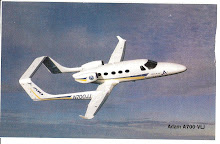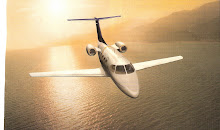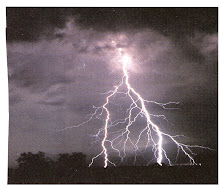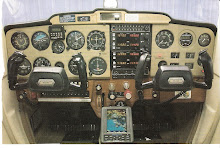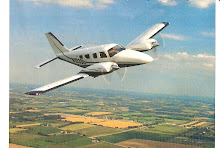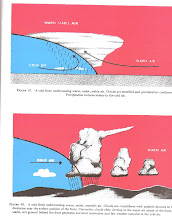Hi Readers: Having been in and out of the hospital these past few weeks, I've fallen a little behind in the 2008 Accident/Incident reporting and accounting. Since the month of May has passed and June is well on it's way, I've decided to account for the two months together, making the important comparisons and discussing the safety of flight trends.
Meanwhile, I hope you are aware of the current changes taking place in the Aviation Industry in an effort to keep our economics balanced and stable. The Airlines, in addition to the mergers and agreements within themselves, are cutting back on flights and routes, pilots, flight attendants, mechanics, etc. to reduce operational costs, such as the high cost of fuel; and the sting of passing the fuel costs to the ticket-buyer is having a reverse effect on travel demand. And the airline services are getting worse and worse. Travelers are looking toward train and bus transportation - (actually we need both in addition, not as an alternate).
The GA User Fee is rearing its ugly head again, after having been reported as settled; the demand for production of new jets and other airplanes is apparently beginning to "sag" in the middle; and all the employee cutbacks are beginning to add to the other problems - all economics. The FAA Controller problems, shortages and training, are still with us - in spite of much study and review (by whom?).
It appears to me that the present Administration does not understand, or is not willing to understand, or study the current problems taking place in the Aviation Industry. And Congress keeps itself busy with it's political nitpicking, most of the time preventing a reasonable vote on the issues it considers, and the aviation problems seem to be at the bottom of the list. What's more, the aviation problems seemto be divided between so many committees - the aviation Industry, knit from pilot to airplanes to airspace to airports, etc., must be considered within itself, en total, to get the fair picture.
Who is actually oversiteing the aviation problems - the problems that go together, the solution of which provides our prime mode of transportation. Yes, you and I, and I've said many times that we must start looking at the total aviation picture, with the long-term view in mind.
Enough for this time. Keep reading, and thanks! Robert Shaw.
Thursday, June 19, 2008
Sunday, June 1, 2008
April 2008 Accounting of NTSB Accidents/Incidents - Part I
Hi Readers:
Here is the promised accounting of the April 2008 Accidents/Incidents. Some changes from March have occured. The GA flying seems to be in full swing. Maybe no for the better. We'll see.
There was a total count of 118 accidents/incidents reported for the 30 day month -- 5 were non-US, 4 were incidents, 4 were Part 135, 4 were agricultural (Part 137), 1 was public use, and there was one unknown scheduled type with three fatalities in Parma, Italy. Of the total there were 26 fatal accidents, with 85 fatalities, and 92 non-fatal accidents. Three of the fatal accidents were non-US. There were 9 Alaska accidents this month, one of which had 4 fatalities. There were 4 incidents - an Airbus A320 experienced severe turbulence from Denver to Phoenix, where 4 flight attendants and 3 passengers sustained minor injuries; an Eclipse EA500 experienced a stuck rudder trim during a simulated SE approach to Flint, Michigan; a Bombardier CL 600 lost both engines during taxi at Minneapolis St. Paul; and a Hill Hartz CB-1 pilot lost control during landing in gusty winds in Erie, Colorado.
Each month we are having more and more experimental / amateur-built aircraft accidents - an indication of greater interest in this type of flying and also sport flying. However, there appears a need for closer inspection of these airplanes by the FAA. There were 6 of these experimental / amateur-built type accidents, unfortunately all fatal, involving low altitude flight and loss of control. There we two on April 7th; The first a Cartwright RV-10 impacted trees and terrain in Seale, Alabama following a missed approach at Euaufauley, Alabama. IFR conditions prevailed and the pilot was instrument rated. The airplane was seen as much as 400 ft above and 1200 ft below the assigned altitude during the last 14 minutes of flight by the controller on radar. The pilot possessed 526 total hours of flight experience, 63 of which was in the accident airplane.
The second accident on April 7th a Glassair III impacted terrain near Cheyenne, Wyoming, on a personal cross country flight from Greybal, Wyoming to Larned, Kansas, no flight plan.
On April 13th, an amateur-built Lancain collided with the ground shortly after takeoff in Lakeland, Florida. VFR condition prevailed. The pilot was ovserved having difficulties closing the canopy prior to takeoff. A witness also reported seeing the canopy moving during takeoff, then the airccraft lost power and went down. On April 17th an E.B. Wood Phantom XI aircraft registered to and operated by a student pilot crashed into a wooded area during an approach to Warrenton, Virginia. The pilot had been performing touch-and-gos landings. The Air Worthiness Certificate awarded the airplane ahd an airframe time of 94 hours. The pilot was 63 years of age. On April 21st an amateur-built Quicksilver GT500 impacted trees and terrain near Paris, Tennessee on an aerial application flight. An engine failure occured. The airplane used automotive fuel, and had experienced abrupt engine failure previously. On April 23rd, the pilot of a Lancain IV-P experienced loss of control during takeoff from Mesa, Arizona on a day flight to Santa Ana, California. Witnesses observed smoke trailing from the airplane and the pilot was advised. The pilot did not respond and the airplanedived into an orange grove, exploded, and was consumed by fire.
The remaining fatal accidents (19), evermore serious and frought with errors, and the 92 nonfatal accidents will be covered in Part II.
Not to end on a tragic occurrence, but lessons must be learned, sometimes the hard way. Everybody loves sports, and skydiving is very popular these days. Here is a skydiving accident that should never have happened. On April 19th a Cessna 206 skydiving flight crashed in Mt. Vernon, Missour. After climbing to 10,500 ft, the pilot signaled the 6 parachutists to open the door. The parachutist informed the pilot that he had overshot the landing zone. The pilot then started a right turn, then the stall warning horn sounded, the airplane stalled, and rolled off to the right into a spin. Three chutists exited safely, a fourth broke his right leg in exiting the plane. The fifth chutist deployed and became entangled around the tail of the airplane, sustaining fatal injuries. The sixth person was found in the wreckage fatally injured. The pilot was flown to a hospital in Springfield. The airplane contacted trees and terrain in a nose down attitude.
Again NTSB is busier than ever with investigations and the aviation fuel prices are still climbbing, becoming a larger cost factor in both airline and GA flying. The latest count by koll.com for 5/30/08, by region for Jet A average $5.64 per gallon and 100LL averaged $5.42 per gallon over the US.
Part II will be coming up soon.
Thanks for listening.
RS
Here is the promised accounting of the April 2008 Accidents/Incidents. Some changes from March have occured. The GA flying seems to be in full swing. Maybe no for the better. We'll see.
There was a total count of 118 accidents/incidents reported for the 30 day month -- 5 were non-US, 4 were incidents, 4 were Part 135, 4 were agricultural (Part 137), 1 was public use, and there was one unknown scheduled type with three fatalities in Parma, Italy. Of the total there were 26 fatal accidents, with 85 fatalities, and 92 non-fatal accidents. Three of the fatal accidents were non-US. There were 9 Alaska accidents this month, one of which had 4 fatalities. There were 4 incidents - an Airbus A320 experienced severe turbulence from Denver to Phoenix, where 4 flight attendants and 3 passengers sustained minor injuries; an Eclipse EA500 experienced a stuck rudder trim during a simulated SE approach to Flint, Michigan; a Bombardier CL 600 lost both engines during taxi at Minneapolis St. Paul; and a Hill Hartz CB-1 pilot lost control during landing in gusty winds in Erie, Colorado.
Each month we are having more and more experimental / amateur-built aircraft accidents - an indication of greater interest in this type of flying and also sport flying. However, there appears a need for closer inspection of these airplanes by the FAA. There were 6 of these experimental / amateur-built type accidents, unfortunately all fatal, involving low altitude flight and loss of control. There we two on April 7th; The first a Cartwright RV-10 impacted trees and terrain in Seale, Alabama following a missed approach at Euaufauley, Alabama. IFR conditions prevailed and the pilot was instrument rated. The airplane was seen as much as 400 ft above and 1200 ft below the assigned altitude during the last 14 minutes of flight by the controller on radar. The pilot possessed 526 total hours of flight experience, 63 of which was in the accident airplane.
The second accident on April 7th a Glassair III impacted terrain near Cheyenne, Wyoming, on a personal cross country flight from Greybal, Wyoming to Larned, Kansas, no flight plan.
On April 13th, an amateur-built Lancain collided with the ground shortly after takeoff in Lakeland, Florida. VFR condition prevailed. The pilot was ovserved having difficulties closing the canopy prior to takeoff. A witness also reported seeing the canopy moving during takeoff, then the airccraft lost power and went down. On April 17th an E.B. Wood Phantom XI aircraft registered to and operated by a student pilot crashed into a wooded area during an approach to Warrenton, Virginia. The pilot had been performing touch-and-gos landings. The Air Worthiness Certificate awarded the airplane ahd an airframe time of 94 hours. The pilot was 63 years of age. On April 21st an amateur-built Quicksilver GT500 impacted trees and terrain near Paris, Tennessee on an aerial application flight. An engine failure occured. The airplane used automotive fuel, and had experienced abrupt engine failure previously. On April 23rd, the pilot of a Lancain IV-P experienced loss of control during takeoff from Mesa, Arizona on a day flight to Santa Ana, California. Witnesses observed smoke trailing from the airplane and the pilot was advised. The pilot did not respond and the airplanedived into an orange grove, exploded, and was consumed by fire.
The remaining fatal accidents (19), evermore serious and frought with errors, and the 92 nonfatal accidents will be covered in Part II.
Not to end on a tragic occurrence, but lessons must be learned, sometimes the hard way. Everybody loves sports, and skydiving is very popular these days. Here is a skydiving accident that should never have happened. On April 19th a Cessna 206 skydiving flight crashed in Mt. Vernon, Missour. After climbing to 10,500 ft, the pilot signaled the 6 parachutists to open the door. The parachutist informed the pilot that he had overshot the landing zone. The pilot then started a right turn, then the stall warning horn sounded, the airplane stalled, and rolled off to the right into a spin. Three chutists exited safely, a fourth broke his right leg in exiting the plane. The fifth chutist deployed and became entangled around the tail of the airplane, sustaining fatal injuries. The sixth person was found in the wreckage fatally injured. The pilot was flown to a hospital in Springfield. The airplane contacted trees and terrain in a nose down attitude.
Again NTSB is busier than ever with investigations and the aviation fuel prices are still climbbing, becoming a larger cost factor in both airline and GA flying. The latest count by koll.com for 5/30/08, by region for Jet A average $5.64 per gallon and 100LL averaged $5.42 per gallon over the US.
Part II will be coming up soon.
Thanks for listening.
RS
Subscribe to:
Comments (Atom)

